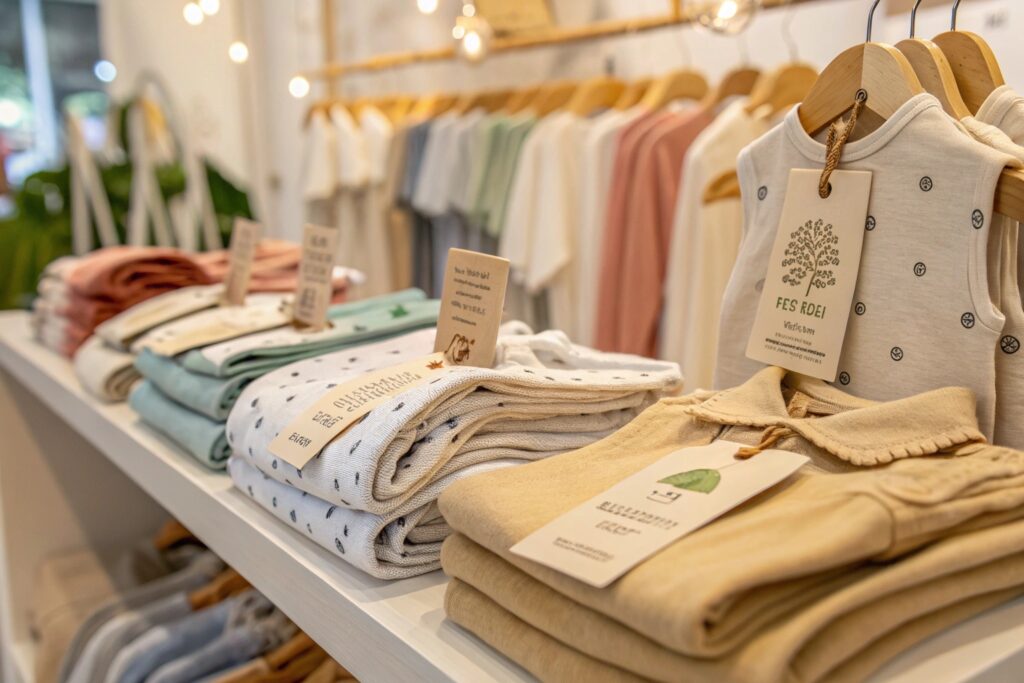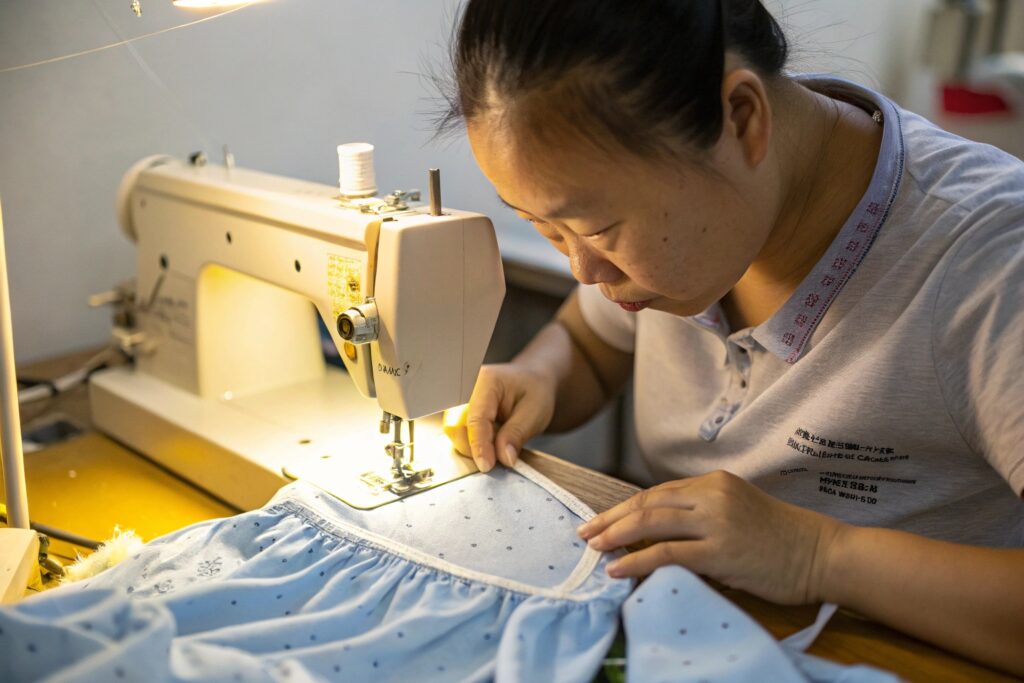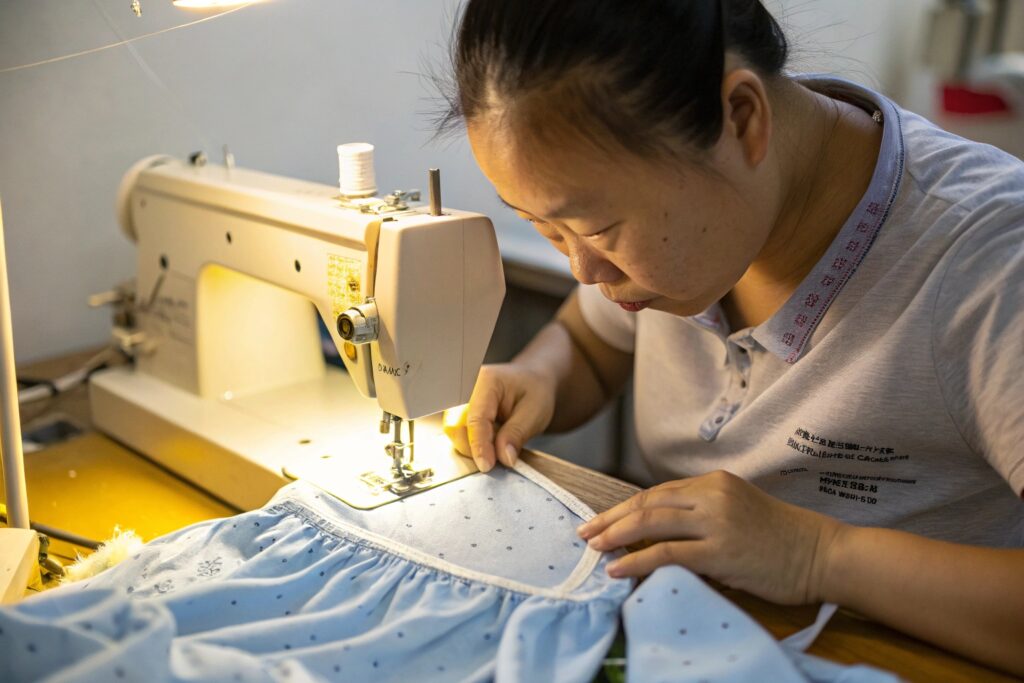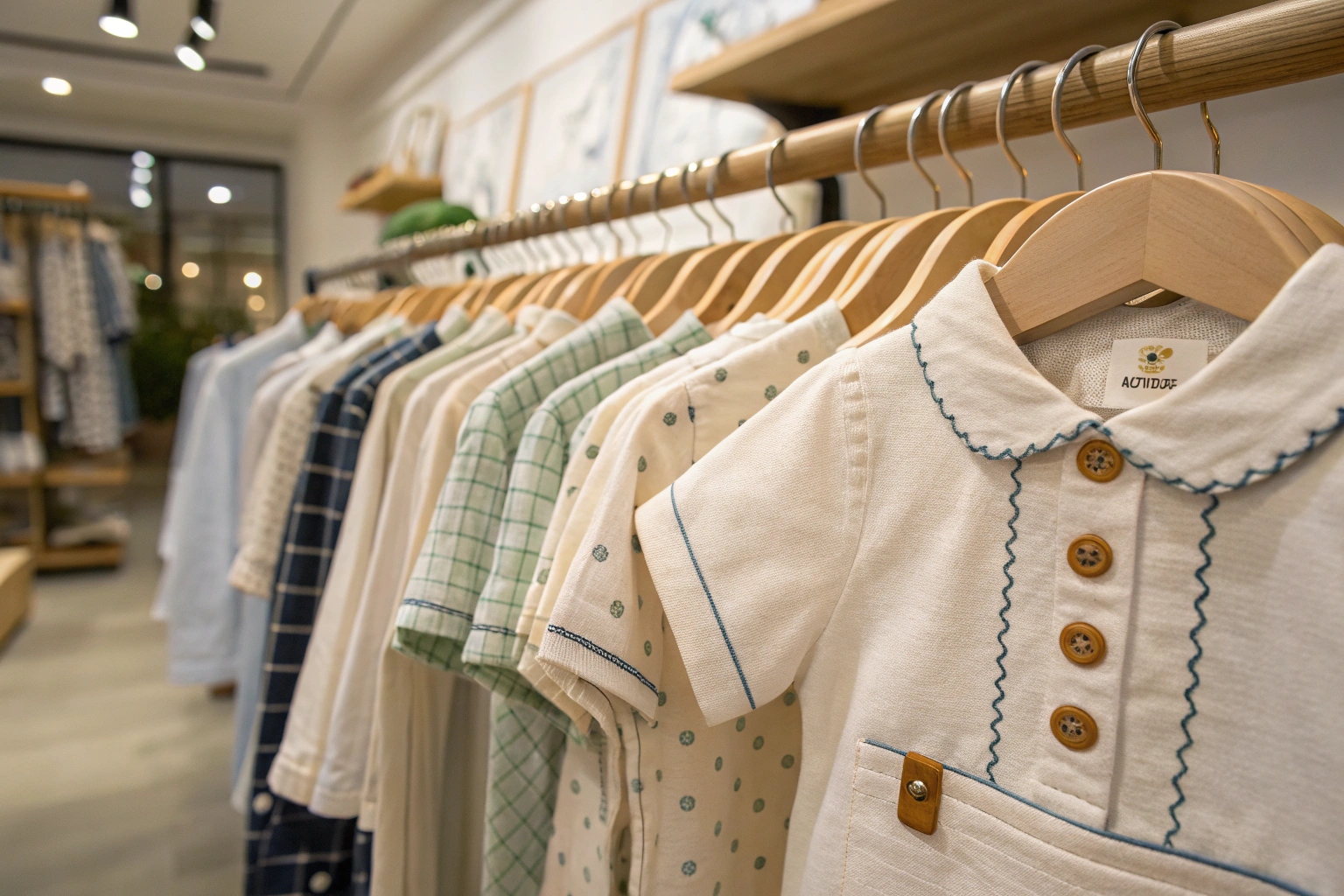You’d think less fabric means lower cost—but some kids’ clothes cost more than adult pieces.
Kids clothing can be more expensive than adult clothing because of smaller batch sizes, safety requirements, premium materials, and higher production costs per unit.
Let’s explore the real factors behind these surprising price tags.
Is organic cotton driving up baby clothing costs?
Parents want the safest for their babies—but organic tags usually mean higher prices.
Yes, organic cotton increases baby clothing costs due to certified farming, ethical labor, and chemical-free processing that require more time and money.

What makes organic cotton more expensive than regular cotton?
The cost starts at the farm. Organic cotton is grown without synthetic pesticides or GMOs. That means lower crop yield, stricter harvesting methods, and more land use. But that’s just the beginning.
When we manufacture organic babywear at Fumao Clothing, we also deal with:
- GOTS or OEKO-TEX certification fees
- Strict wastewater treatment
- Non-toxic dyes and natural finishing agents
- Organic thread, labels, and trims
This process demands skilled labor and slower production. Even packing must meet eco standards—like compostable bags and recycled tags.
Here’s a cost comparison breakdown:
| Factor | Regular Cotton Onesie | Organic Cotton Onesie |
|---|---|---|
| Fabric Cost (per meter) | $2.10 | $4.00–$5.50 |
| Certification & Compliance | ❌ None | ✅ Required |
| Chemical Finishing | ✅ Yes | ❌ None |
| Labor Practices | Variable | Ethical labor required |
Do parents think it’s worth it?
Absolutely. American buyers I work with, like Ron, confirm that organic babywear outsells regular versions in boutique markets. Parents feel safer when they know clothing isn’t leaching chemicals onto sensitive baby skin. And with health becoming a top priority, that peace of mind justifies the price.
Do safety standards make kidswear more expensive?
Every parent wants safety. But few realize how much it costs to meet safety requirements.
Yes, safety standards directly increase the cost of kidswear due to extra testing, special trims, flame retardants, and compliance documentation.

What kinds of safety tests are required in children’s clothing?
Manufacturers must follow national and international safety rules. For example:
- CPSIA (USA): Requires lead, phthalate, and flammability testing
- EN 14682 (EU): Regulates cords and drawstrings in children’s garments
- Nickel content: Must be tested on snaps and buttons
- Choking hazard: Small parts must be securely attached
Each of these requires lab testing—which adds cost. A full test suite can cost $500–$2,000 per product, depending on complexity.
Here's how costs break down:
| Safety Element | Additional Cost Per Unit | Notes |
|---|---|---|
| Flammability Test | $0.10–$0.30 | Especially for sleepwear |
| Lead/Phthalate Test | $0.05–$0.15 | On trims, prints, fabric |
| Pull Test for Buttons | $0.05–$0.10 | Required for every garment with snaps |
| Lab Report/Certificate | One-time fee | Must be renewed per batch or annually |
How do brands manage these added expenses?
Some large brands absorb testing costs across thousands of units. But smaller manufacturers and niche labels—especially those doing private labels for American and European buyers—must add these costs to the retail price.
At Fumao, I always advise clients to keep designs simple—avoid excessive trim or mixed materials unless necessary. Simplicity saves money while staying safe.
Why is babywear production cost higher per unit?
It’s easy to think babywear is cheaper—it’s smaller, after all. But that’s not how factories work.
Babywear has a higher unit cost because of its precision requirements, slow sewing pace, and extra trims like snaps, linings, and elastic bands.

Why does it take longer to produce a baby garment?
Making baby clothes is surprisingly labor-intensive. The pieces are smaller, but that makes them harder to handle. Cutting tiny patterns, aligning small collars, and attaching mini trims require delicate work.
Here’s what I see in our factory lines:
- 5 pieces of adult T-shirts = 6–7 baby bodysuits in time
- Babywear requires more QC due to choking and irritation risks
- More complex fasteners: double-row snaps, mittens, collars, footies
- Extra softness needed: serged seams, interlinings, brushed backs
Here’s a comparison chart:
| Feature | Babywear | Adultwear |
|---|---|---|
| Stitching Time | ~25–30 min per unit | ~15–20 min per unit |
| Trim Handling | Snaps, elastic, mittens | Basic seams/buttons |
| Material Prep | Soft linings, combed cotton | Standard jersey or poplin |
| Required Precision | Very high | Moderate |
Does automation reduce the cost?
Not really. Babywear is too detailed for full automation. Most of the sewing must be done by hand. Plus, operators need training on handling delicate fabrics, which reduces efficiency.
This is why many factories avoid specializing in babywear. But at Fumao, we’ve trained separate production lines just for this segment—because when done right, babywear can command a higher retail value.
Are small batch runs causing higher kidswear prices?
Ever notice boutique kidswear brands pricing a tee at $40? That’s often the batch size talking.
Yes, small batch runs increase kidswear prices due to high setup costs, minimum order requirements, and inefficiencies in sourcing and logistics.

What makes small batch production more expensive?
Factories charge not just for materials—but also for:
- Pattern development
- Machine setup time
- Worker scheduling
- Material waste
These overhead costs stay the same whether you make 100 pieces or 10,000. So with smaller runs, the cost per unit spikes.
Here’s an example:
| Quantity | Total Setup Cost | Cost Per Piece (excluding materials) |
|---|---|---|
| 10,000 units | $500 | $0.05 |
| 500 units | $500 | $1.00 |
| 100 units | $500 | $5.00 |
And when it comes to fabric, most mills set a MOQ (Minimum Order Quantity) of 1,000 meters or more. Small brands have to:
- Pay higher prices per meter
- Source deadstock or leftover fabric
- Accept delays due to shared production slots
Is there a way to reduce these costs?
Yes, but it requires strategy. I often advise buyers to:
- Share fabric across multiple styles
- Standardize trims and colors
- Consolidate orders into seasonal batches
- Use “evergreen” designs that sell year-round
At Fumao, we also offer clients semi-custom options—pre-approved patterns that can be rebranded. This helps them scale up without starting from zero.
Conclusion
Kidswear isn’t just shrunken-down adultwear—it’s a precise, safety-driven, and often small-scale business. And when you dig into the costs, every dollar makes sense.










